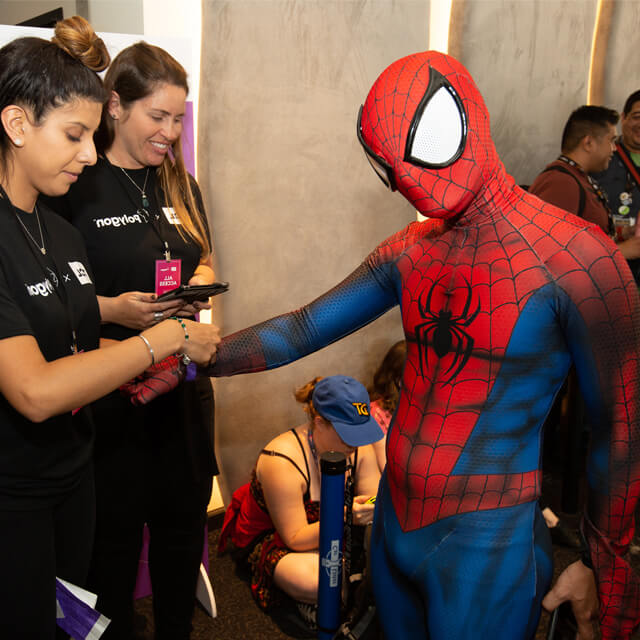Have you broken free from cable recently? If you have, you’re certainly not alone. Fewer and fewer people are relying on traditional TV for their entertainment needs, as the rise of super-fast internet and high-quality streaming services has led to a steady increase in cord cutting throughout the US over the last few years. And, all signs indicate that this trend will only continue through 2019.
What is Cord Cutting?
Cord cutting really refers to getting rid of one cable – the one that goes from a satellite or cable box to the TV. Many TV watchers who are tired of the costs of cable and satellite TV, and the poor customer support associated with these providers, have started to “cut the cord” and cancel all of their traditional TV services.
While terrifying to some, the practice has its benefits. Cord cutting often leads to a big reduction in TV costs, thanks to no long-term contracts, a la carte channel selection of only the content you want, and a one-time equipment cost for streaming hardware compared to recurring cable/satellite box rental costs.
There are of course still limits on what consumers can get when cutting cable. Some streaming services still require cable or satellite TV subscriptions. Plus, not all services offer the comprehensive selection of channels or content that traditional TV customers enjoy. But despite these hurdles, content providers are taking notice of viewing trends and are tailoring their services to the droves of consumers who are turning to cord cutting.
The State of Satellite and Cable TV
Cord cutting has proven to be much more than a fad, directly contributing to the dwindling of the traditional satellite and cable TV. The industry in total posted a loss of 1.2 million subscribers throughout the US during Q3 of 2018. This was called the “worst quarter on record” for traditional TV providers by market tracker S&P Global Market Intelligence.
This decrease included a loss of 726,000 subscribers from satellite operators and a staggering loss of 1.1 million subscribers for cable TV services. The drop was further accelerated by the fact that many large broadcasting networks such as ESPN and Disney are circumventing the traditional TV industry relationship. By offering their own subscription streaming video services, more networks are expected to leave the fold of cable and satellite TV to capitalize on an ever-growing online/streaming market.
The primary factor driving the subscriber exodus, according to Deloitte’s 2018 Digital Media Trends Survey, is still price. About 70% of traditional TV subscribers believe they pay too much for the service they’re currently receiving. A further 56% say that they only pay for their cable and satellite TV subscriptions because they’re bundled with their home internet services.
The Rise of Cord Cutting
S&P Global Market Intelligence’s Kagan research group estimates that a total of 51 million people will cut the cord by 2021 as online streaming services become cheaper, more widely available, and offer a greater diversity of choice for consumers. Compared to the $203 that subscribers to traditional TV pay per month, cord cutters pay just over half that at $118 per month, on average, which will satisfy consumers that are seeking value.
Services like Netflix, Amazon Prime, YouTube, Hulu, and Sling TV continue to grow in the digital subscription TV market. Internet subscription services have grown by 2.1 million subscribers over the 9-months reported on by Kagan, while the traditional TV industry lost 2.8 million subscribers in the same period. This leaves the traditional networks with around 91 million subscribers, of which 88.2 million are residential customers.
However, the news isn’t entirely bad for many satellite and cable TV providers, as many of the same companies are also the broadband distributors that those cord cutters rely on for their streaming services. This past year has shown a rise in broadband subscribers to cable and internet providers such as Cox, Charter, and Comcast, according to a report from the Leichtman Research Group. Compared to 390,000 new subscribers in Q3 last year, the same period this year has seen 580,000 subscribers joining the ranks, representing the first year-over-year increase in four years.
How to Cut the Cord
If you’re viewing habits are anything like the millions of people who have already turned off their traditional TV supply, then the savings and a la carte selection offered by digital streaming services might be appealing indeed. What do you need to join the ranks of cord cutters and leave your satellite or cable subscription behind? There are two primary alternatives to relying on cable and satellite:
- Streaming is the primary cause of the decrease in cable and satellite TV. TCL Roku TVs already have the most popular streaming media platform built-in, making the transition to streaming incredibly seamless. There are thousands of streaming channels available allowing for easy enjoyment of a range of streaming services. Netflix, Hulu, and Amazon are among the most popular channels available, but the list is continually growing with many traditional networks launching their own streaming services.
- The antenna is where TV started. By connecting an antenna to your TCL TV, you can reach programs from network affiliate and local over-the-air TV channels instead of getting them through a satellite/cable provider. Many TV networks, including NBC, Fox, and CBS, offer free programming. If you have an analog TV or an older HDTV, you might need a digital converter box to connect the antenna to your TV. All TCL TVs have tuners built-in, so you can easily enjoy broadcast TV.
More cord cutters are relying on a mix of streaming and antenna TV to completely replace the cable/satellite packages they once enjoyed. This approach lets anyone consume a wide range of free, local, and network affiliate programming, but also a staggering assortment of TV shows and movies from popular streaming services.
As cable and satellite TV continues to lose viewers, and as the programming offered by streaming services increases in both quality and quantity, it’s expected that these viewing trends will only continue to grow. Looking to begin your cord cutting journey? Don’t miss our Cord Cutting Guide and other resources right here to help you break free from cable!



share